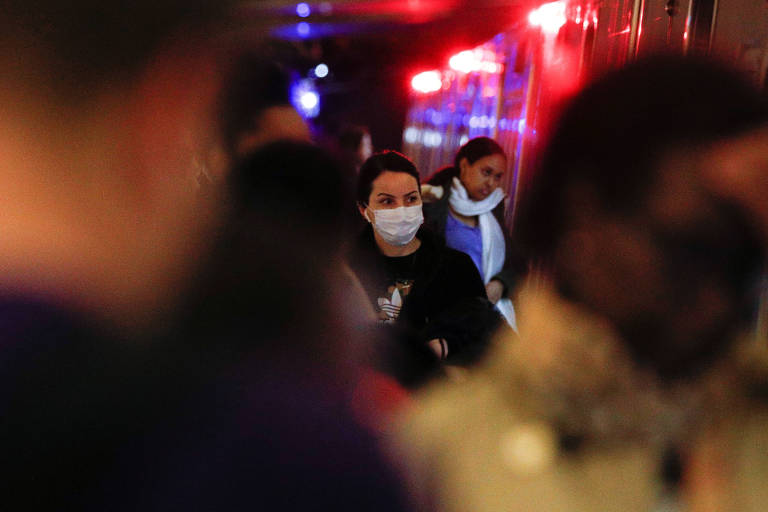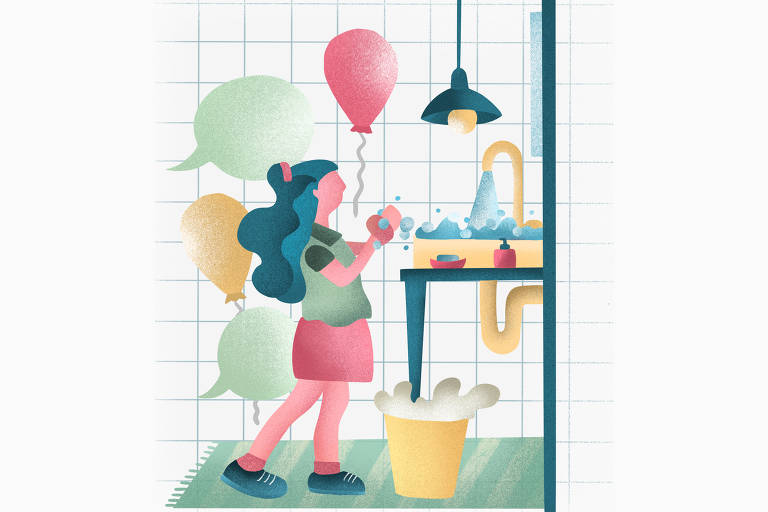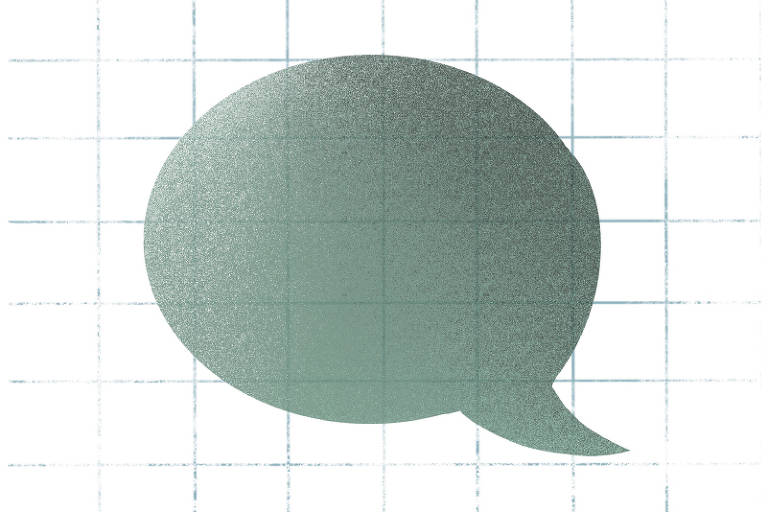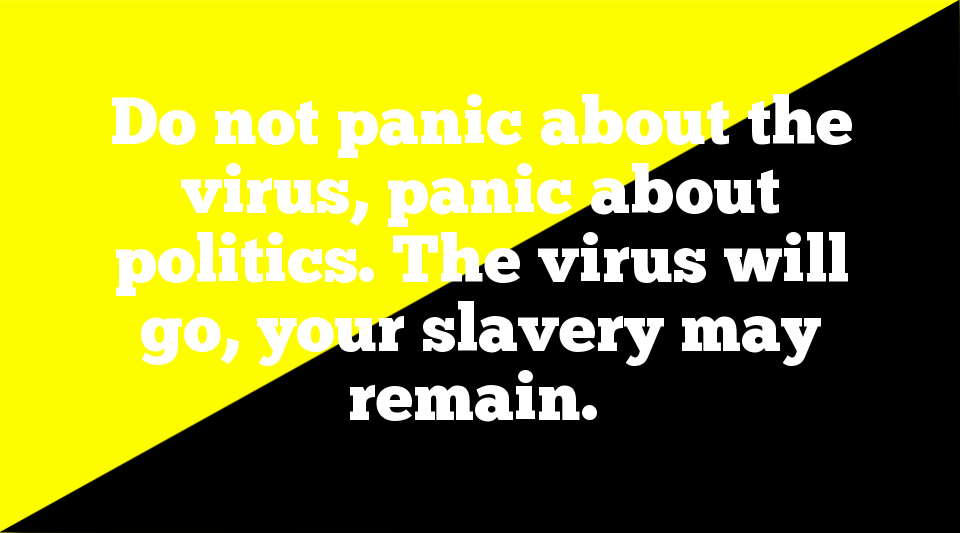WASHINGTON
"Você está qualificada para fazer o teste."
A enfermeira anunciou o procedimento em uma sala reservada, 45 minutos depois da minha chegada à emergência do Hospital da Universidade Howard, em Washington.
Na manhã desta segunda-feira (16), antes mesmo de alcançar a recepção, eu já tinha sido abordada por um funcionário do hospital sobre o motivo da minha investida.
Avisei que estava ali por causa do coronavírus.

Passageiro com máscara no metrô de Washington, nos EUA - Tom Brenner - 13.mar.20/Reuters
Enquanto ouvia que eu não apresentava sintomas, mas tinha estado em contato próximo a pessoas que receberam o diagnóstico do vírus, ele se apressou em pegar uma máscara e prendê-la ao meu rosto.
"Como você tem certeza de que os pacientes com quem esteve são positivos?", perguntou.
Respondi que eram diversos integrantes da comitiva do presidente Jair Bolsonaro, que viajara na semana passada a Miami, onde eu estava para fazer a cobertura, e que os resultados tinham sido divulgados oficialmente.
Só então ele pediu meu documento e me colocou em uma área de acesso ao estacionamento externo do hospital, sem contato com nenhum outro funcionário ou paciente.
Sentada em uma maca, fui questionada sobre meu último dia de contato com a comitiva de Bolsonaro —terça-feira (10)— e sobre as datas de divulgação dos testes dos auxiliares do presidente —quinta-feira (12) foi o primeiro, do secretário de Comunicação do Planalto, Fabio Wajngarten.
Na sexta-feira (13), foi a vez do indicado à embaixada do Brasil nos EUA, Nestor Forster, seguido por outros nomes no fim de semana.
Depois do primeiro funcionário, uma enfermeira entrou na sala, fez os mesmos questionamentos, mediu minha temperatura, pressão e oxigenação.

Pergunte o que a criança sabe a respeito - É possível que as crianças escutem fragmentos de informações. Ela pode ter ouvido que as pessoas no mundo todo estão morrendo ou o fato de que a doença parece com uma gripe, e isso vai definir os rumos da conversa para acalmá-la. Ilustrações Catarina Pignatto/

Antes de tudo, informe-se e controle seus próprios medos - As crianças precisam ter acesso a informações confiáveis. Para isso, os adultos precisam estar preparados para responder às dúvidas, desmentir boatos e não aumentar a ansiedade delas . Ilustrações Catarina Pignatto/
"Está tudo bem", disse, anunciando em seguida que eu poderia fazer o teste. Em menos de uma hora, eu tinha a notícia de que seria testada para o coronavírus.
Mas esperei mais duas horas até o médico aferir meus batimentos cardíacos e autorizar que recolhessem o material do meu nariz e boca com uma espécie de cotonete.
Mais 20 minutos para eu ser comunicada de que o resultado ficará pronto somente em cinco dias.
Até lá, explicaram, devo seguir em quarentena sem sair de casa —o que tenho feito desde quinta-feira (12), após retornar de Miami.
"Se der negativo, você está liberada [da quarentena]", disse a enfermeira.
Fiquei quase seis horas no hospital, mas a rapidez com que decidiram que eu poderia fazer o teste e sua realização sem grandes complicações não é o cenário mais comum nos EUA nas últimas semanas.
As autoridades de saúde priorizavam até agora realizar exames em pessoas que apresentassem os principais sintomas (febre e tosse seca) e haviam estado em contato direto com pacientes com diagnóstico positivo para o coronavírus.
No meu primeiro minuto no hospital em Washington, afirmei que não havia apresentado sintomas, exceto um pouco de tosse seca no sábado (7).
Minha preocupação era ter sido exposta a vários casos confirmados na semana passada e ter me tornado um possível vetor de transmissão.
Desde que começaram a circular as primeiras notícias sobre o vírus, no fim de janeiro, americanos encontram dificuldade para fazer o exame em diversas cidades do país.
O presidente Donald Trump foi negligente com a gravidade da crise na largada e seu governo demorou para começar a testar casos suspeitos de maneira ampla.
Especialistas avaliam que, se a pandemia durar mais que o esperado ou o contágio entre os americanos ficar mais grave nas próximas semanas, as falhas iniciais no processo dos testes serão as principais culpadas.
Os problemas vão desde escassez no número de testes e material disponíveis até a morosidade dos protocolos.
A avaliação é de que o quadro deixou os EUA no escuro por muito tempo e que o vírus pode ter se espalhado com mais força sem que tenha sido possível detectar sua verdadeira extensão no país.
Levantamentos indicam que, até sexta (13), 20 mil testes haviam sido feitos nos EUA.
Na Coreia do Sul, cuja população é seis vezes menor do que a americana, 250 mil exames tinham sido realizados no mesmo período.
Trump minimizava a pandemia até a semana passada, quando declarou emergência nacional e outras medidas que foram vistas como uma forma brusca de corrigir a rota.
Ele prometeu mais 1,4 milhão de testes para o coronavírus até esta semana e 5 milhões até o fim do mês, por meio de uma parceria com o sistema privado. Não ficou claro, no entanto, se os exames serão gratuitos.
No meu caso, não precisei pagar pelo teste na hora. Ele estava coberto pelo plano de saúde que tenho no Brasil e é conveniado com uma empresa americana.
Até a primeira semana de março, os casos confirmados de coronavírus nos EUA estavam em cerca de 500 e, em menos de dez dias, saltaram para 4.118, com ao menos 74 mortos.
Com o avanço dos testes, o crescimento dos diagnósticos positivos deve ser ainda mais vertiginoso e, com mais gente infectada, as medidas de distanciamento social serão imprescindíveis.
Neste fim de semana, o CDC (Centro de Controle de Doenças dos EUA) recomendou a suspensão de eventos com mais de 50 pessoas pelas próximas oito semanas, enquanto cidades como Nova York e Washington anunciaram restrições para o funcionamento de escolas e do comércio local.
Trump, por sua vez, também endureceu as medidas nacionais contra a pandemia.
Nesta segunda, fez um apelo aos americanos para que fiquem em casa. Pediu que pelo menos nos próximos 15 dias reuniões com mais de dez pessoas sejam evitadas, bem como viagens e ida a bares e restaurantes.
Na saída do hospital em Washington, a enfermeira me deu uma máscara de material reforçado para cobrir o rosto: "Use caso você precise ir ao mercado antes de sair o resultado do seu exame".







